How this sleepy island became one of Japan’s most exciting destinations
Advertizement
Remarkable Living
How this sleepy isle became one of Japan'south most exciting destinations
Upwards until the early 90s, Naoshima was a remote isle in Nihon'south Seto Inland Sea, with an ailing fishing and copper smelting industry. Today, it is a must-visit destination for art lovers and travellers seeking a 1-of-a-kind holiday.
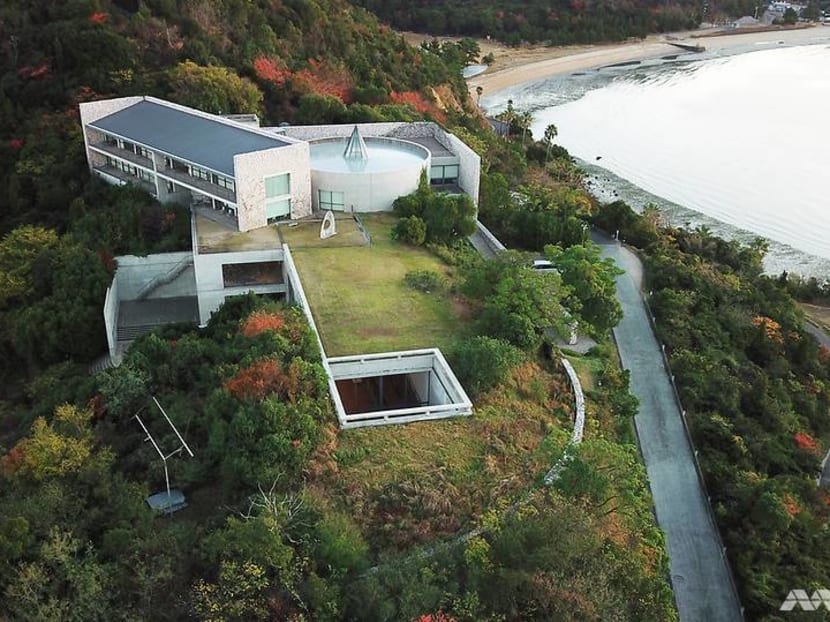
Benesse Business firm was the catalyst that transformed the in one case-sleepy island of Naoshima into a utopia for art lovers. (Photo: Freestate Productions)
01 Feb 2022 06:30AM (Updated: 21 May 2022 12:50PM)
A three-hour drive from Osaka to Uno Port, followed past a 20-minute ferry ride, takes travellers to Naoshima Island, a rather unlikely merely notable destination for art aficionados.
Juxtaposed confronting small traditional fisheries and laid-back vibe of the isle, you'll find contemporary museums, colourful galleries, behemothic sculptures, charming cafes and erstwhile Japanese houses transformed into stunning, oftentimes bizarre, art installations.
Is information technology any wonder that Naoshima fabricated it to National Geographic's Cool List of Must-Sees 2019?
Once a thriving fishing village and home to Japan's oldest operating copper smelters, the isle's economic turn down was due in part to its younger inhabitants leaving for employment opportunities in the city.
In the hopes of reviving the livelihood of its 3,000 inhabitants, the mayor at the time wanted to develop the island. He sought the fiscal backing of Soichiro Fukutake, the chairman of Fukutake Publishing (now known equally Benesse Holdings) – a Japanese educational activity and publishing powerhouse – who purchased the south side of the island.
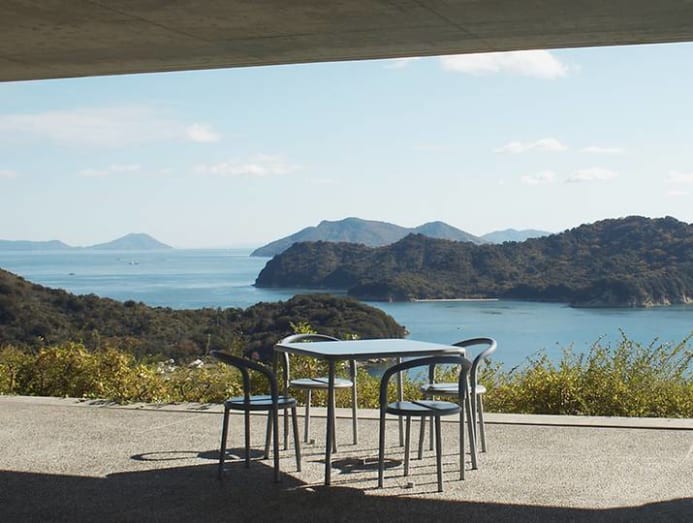
To transform Naoshima into a utopia for fine art lovers, they enlisted Pritzker Architecture Prize Winner, Tadao Ando, who worked over the next ii decades edifice several beautiful museums that take become part of the artistic landscape.
Known for designing buildings that follow the natural terrain, Ando's structural works on the island blend into, or are built into the earth, some fifty-fifty opening up to the sky.

His first masterpiece, built in 1992, was Benesse House, the isle'south chief attraction which is both a hotel complex and contemporary art museum. By having living accommodations, guests can fully appreciate Ando'southward striking designs and the natural beauty of the island, at their ain footstep. The hotel also offers guests special access to the museum's galleries outside its opening hours.
"Benesse means 'living well'. Nosotros not only want our visitors to stay but also want them to become interested in art and feel a sense of zipper," quipped Ryoji Kasahara, president of Naoshima Cultural Village.
Benesse House carries an impressive collection of contemporary art, the likes of Yves Klein, Cy Twombly, Richard Long, Jean-Michel Basquiat, Andy Warhol and Hiroshi Sugimoto.
"Sugimoto's artwork is near the body of water and the horizon. In our museum, there are 14 pictures of horizons he took around the world. It is special how the Seto Inland Body of water is presented in the display of this artwork," said art manager, Masanori Saito.
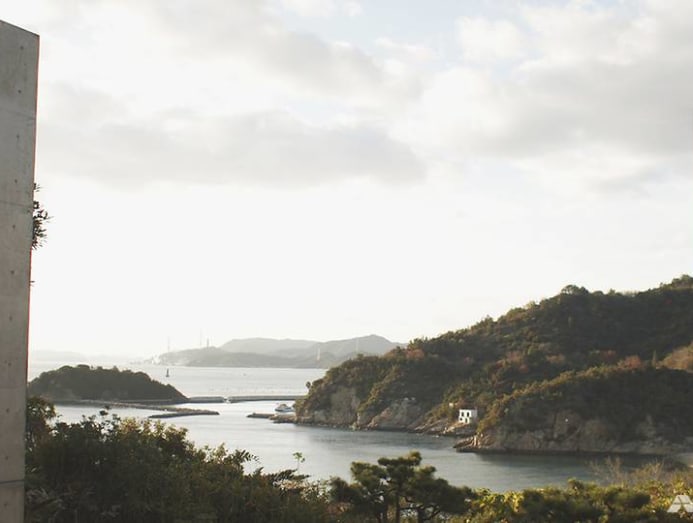
To encourage art to flourish on Naoshima, Benesse gives out awards and bursaries every two years to international artists who wish to create art to reflect the isle'southward identity. The latest recipient to win the Benesse Prize is Singapore's very own Amanda Heng. The prize was presented in collaboration with the Singapore Art Museum, equally function of the Singapore Biennale.
"We volition ask the artist to create an original artwork of that specific place. Instead of merely appreciating the scenery, we add commissioned fine art installations to a location as nosotros want visitors to enjoy them and also appreciate the history and civilization of the island," explained Saito.
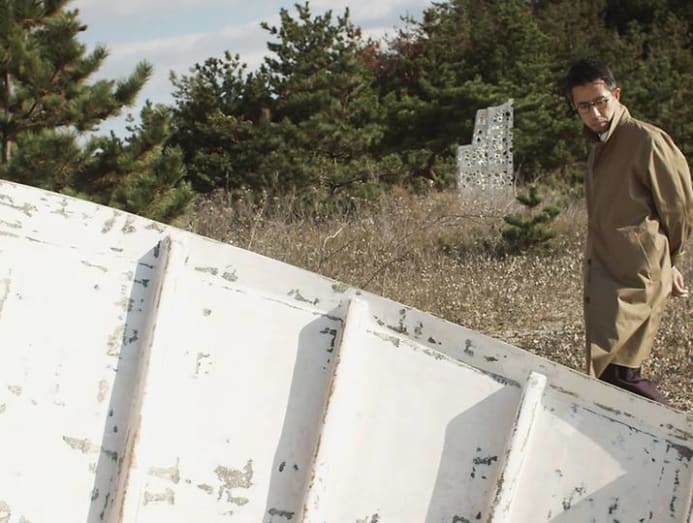
A short stroll from the hotel is the Lee Ufan Museum, the isle'due south newest attraction that opened in 2010. It's dedicated to the contemporary work of Korean-born creative person, Lee Ufan.
On display in the Ando-designed semi-underground structure are large installations made of stone, concrete and huge slabs of iron, as well every bit a number of paintings from earlier in his career. His piece of work resonates with Ando's architecture, giving visitors an impression of both stillness and dynamism.
"When you say art, it is usually displayed on white canvass. But when you lot come to Naoshima, our fine art is non similar that at all," shared Kasahara.
The Chichu Art Museum opened in 2004, featuring bunker-style galleries built into a hillside, is probably one of his Ando'due south true masterpieces. Here is where y'all'll detect a dedicated gallery to Claude Monet and his famed Water Lilies serial, housed in a pure white underground sleeping accommodation with tens of thousands of tiny white tiles, dimly-lit only past natural light.
"I'd similar visitors to feel the strength of the light and atmosphere of the place. These would make their experiences different when viewing the artworks," attested Kasahara.
The best style to relish the island is past bicycle, combining fine art with stunning sea vistas set against traditional fishing villages. Beingness outdoors is where you get to run across famous giant sculptures that dot the island, such as Yayoi Kusama'southward Pumpkin and Shinro Ohtake'due south Shipyard Works. "The scenery of Seto Inland Sea is cute. Yet, instead of just seeing it as information technology is, by adding in fine art, the ordinary scenery becomes something special," he added.
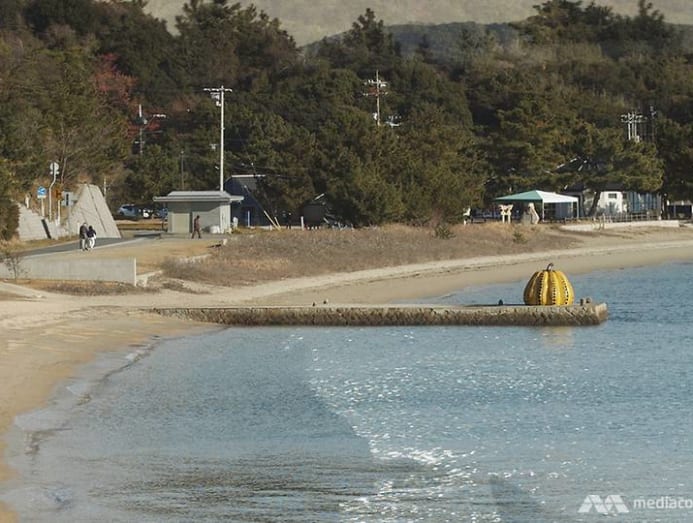
Making a trip here is well worth adding to your Japan itinerary for something a petty different, even if you are not an arts buff. "I really promise nosotros tin keep working to make this place special where people who came here once in the past would want to come up back to see the same artwork over again," concluded Saito.
Adjusted from the serial Remarkable Living. Watch full episodes on CNA, every Sunday at 8.30pm.
READ> How Kyoto artisans keep their traditions alive with Instagram and Airbnb
Recent Searches
Trending Topics
quezadasumpeormses92.blogspot.com
Source: https://cnalifestyle.channelnewsasia.com/remarkableliving/naoshima-island-japan-art-177161

0 Response to "How this sleepy island became one of Japan’s most exciting destinations"
Enregistrer un commentaire